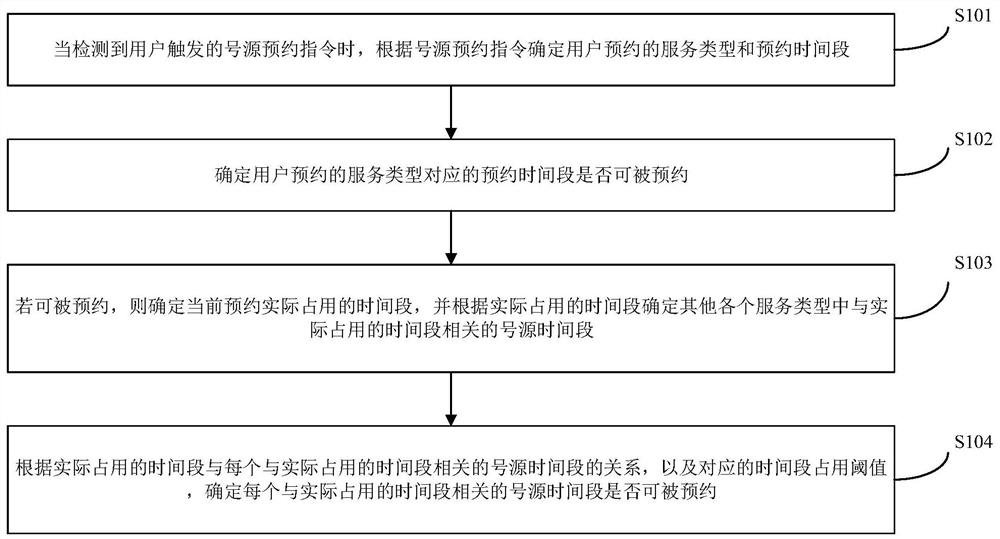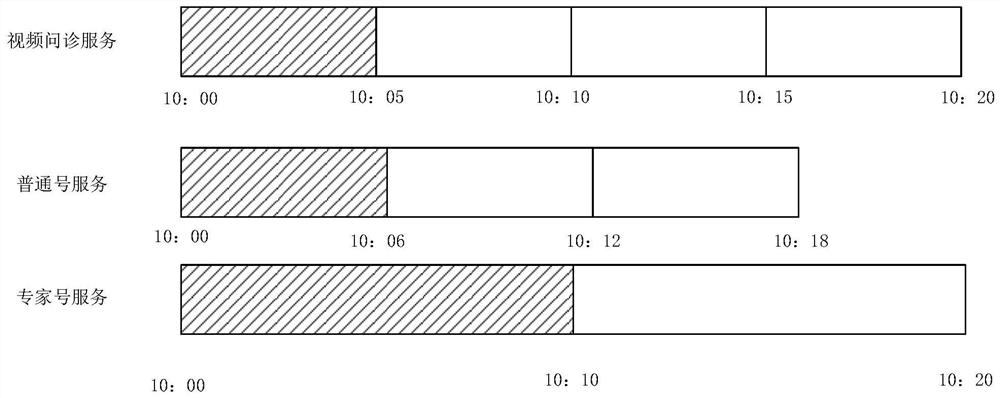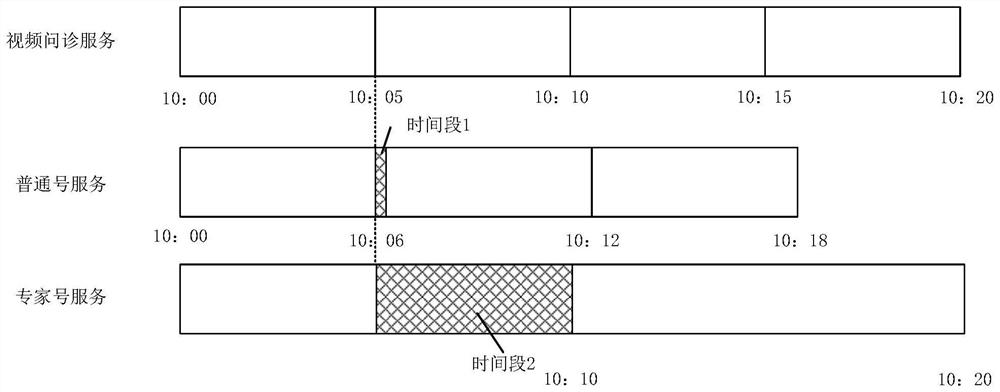Number source reservation method and device, electronic equipment and computer readable storage medium
A number source and appointment time technology, applied in the computer field, can solve the problems of increasing the waiting time of medical staff and patients, waste of resources, and reducing the efficiency of consultation, so as to improve the efficiency of consultation, reduce fragmented time, and reduce waiting time.
- Summary
- Abstract
- Description
- Claims
- Application Information
AI Technical Summary
Problems solved by technology
Method used
Image
Examples
Embodiment Construction
[0093] The application will be described in further detail below in conjunction with the accompanying drawings.
[0094] This specific embodiment is only an explanation of this application, and it is not a limitation of this application. Those skilled in the art can make modifications to this embodiment without creative contribution according to needs after reading this specification, but as long as the rights of this application All claims are protected by patent law.
[0095] In order to make the purposes, technical solutions and advantages of the embodiments of the present application clearer, the technical solutions in the embodiments of the present application will be clearly and completely described below in conjunction with the drawings in the embodiments of the present application. Obviously, the described embodiments It is a part of the embodiments of this application, not all of them. Based on the embodiments in this application, all other embodiments obtained by pe...
PUM
 Login to View More
Login to View More Abstract
Description
Claims
Application Information
 Login to View More
Login to View More - R&D
- Intellectual Property
- Life Sciences
- Materials
- Tech Scout
- Unparalleled Data Quality
- Higher Quality Content
- 60% Fewer Hallucinations
Browse by: Latest US Patents, China's latest patents, Technical Efficacy Thesaurus, Application Domain, Technology Topic, Popular Technical Reports.
© 2025 PatSnap. All rights reserved.Legal|Privacy policy|Modern Slavery Act Transparency Statement|Sitemap|About US| Contact US: help@patsnap.com



